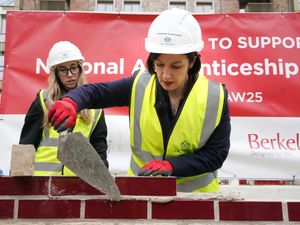Coronavirus: Unemployment up and claims soar in West Midlands and Staffordshire
Unemployment in the West Midlands and Staffordshire jumped in the three months to March as the labour market was struck.
Official figures from the Office for National Statistics revealed that UK unemployment increased by 50,000 to 1.35 million in the quarter – for the West Midlands it was up 14,000 on the previous quarter at 146,000.
Nationally unemployment claims soared by more than 69 per cent last month after the coronavirus lockdown hit the labour market.
Jobless claims under Universal Credit surged by 856,000 to 2.1 million in April, compared with the previous month.
For the West Midlands, the numbers claiming unemployment benefits, including Universal Credit, were up 72,660 from March to 217,725 – 7.6 per cent of the working population.
In the Black Country Sandwell saw the biggest rise of 4,370 to 15,215 (7.5 per cent), followed by Dudley, up 4,305 to 12,875 (6.7 per cent) and Wolverhampton, up 4,295 to 14,715 (nine per cent). Walsall had a rise of 3,635 to 12,260.
Staffordshire's total was up 8,765 to 20,875 (3.9 per cent) with Cannock Chase having a rise of 1,360 to 3,025 (4.8 per cent), South Staffordshire up 1,215 to 2,545 (3.8 per cent), Stafford up 1,165 to 2,835 (3.4 per cent) and Lichfield rising by 970 to 2,290 (3.7 per cent).
Wyre Forest, including Kidderminster had a rise of 1,400 to 2,990 (5.1 per cent).
More Covid-19 coverage:
The employment rate in the West Midlands for January to March was 75 per cent with the number working 2.71 million with the unemployment rate five per cent - the second highest rate in the UK – against the Uk rate of 3.9 per cent.
Jonathan Athow, deputy national statistician for economic statistics at the ONS, said: "While only covering the first weeks of restrictions, our figures show Covid-19 is having a major impact on the labour market.
"In March employment held up well, as furloughed workers still count as employed, but hours worked fell sharply in late March, especially in sectors such as hospitality and construction.
"Through April, though, there were signs of falling employment as real-time tax data show the number of employees on companies' payrolls fell noticeably, and vacancies were sharply down too, with hospitality again falling steepest."
Official statisticians also said that early estimates for April indicate that the number of paid employees fell by 1.6 per cent compared to March, as firms began to feel a greater impact from the lockdown.
Job vacancies also significantly decreased, with the number of empty posts in the three months to April diving by 170,000 to 637,000, compared to the previous quarter.
Matthew Fell, Confederation of British Industry chief UK policy director, said: “The data for the first few weeks of the Covid-19 crisis reveals sharp falls in vacancies and hours worked, coupled with soaring benefits claims. While employment shows a smaller decline, pointing to the early success of the job retention scheme, the severe impact of the pandemic on the UK labour market is already becoming clear.
“Looking ahead, how the job retention scheme evolves in line with restarting the economy will have a big impact on jobs and earnings. Extending it until October was a bold decision, giving businesses and workers medium-term security. Now, greater flexibility is needed to help businesses slowly bring people back to work where it is safe to do so.”




